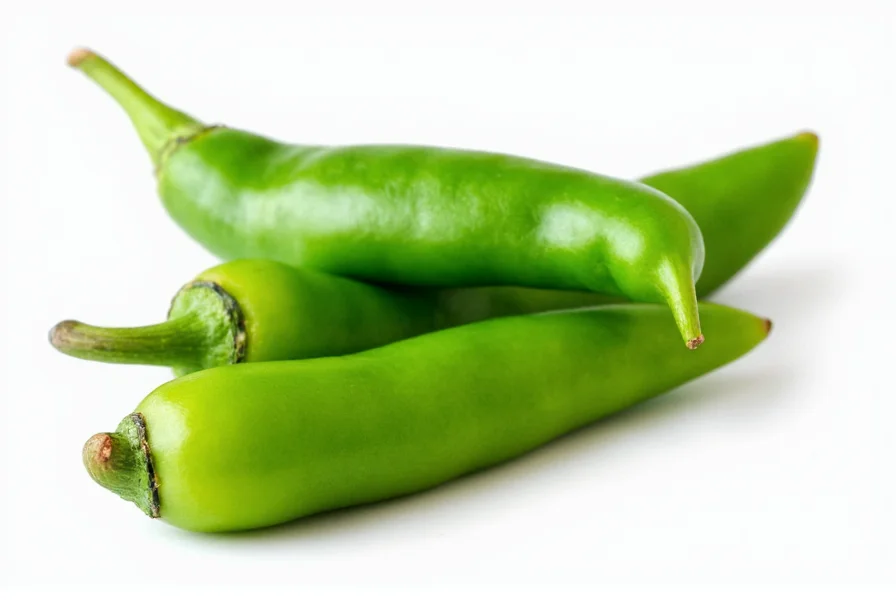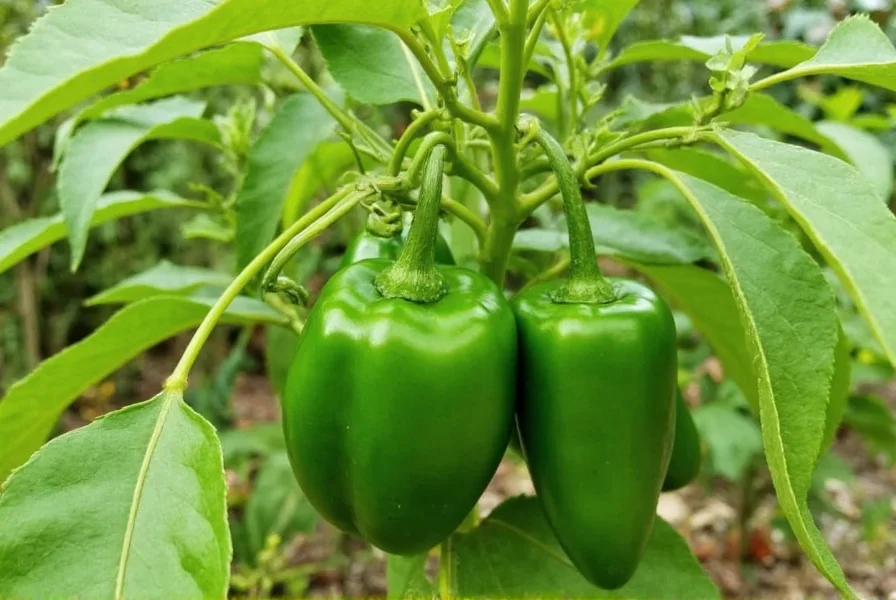Understanding chile serrano characteristics helps home cooks and culinary enthusiasts maximize this versatile pepper's potential. While often confused with jalapeños, serranos have distinct qualities that influence both flavor profiles and cooking applications. This guide explores everything you need to know about selecting, using, and substituting these vibrant peppers.
Physical Characteristics and Varieties
Chile serrano peppers grow upright on compact plants, reaching maturity in 70-80 days. Their name derives from sierras (mountains), reflecting their traditional cultivation in Mexico's mountainous regions. Unlike elongated cayenne peppers, serranos maintain a stout, tapered shape with thick walls ideal for stuffing or pickling.
Common color variations include:
- Green serranos - Most widely available, offering bright, vegetal notes
- Red serranos - Fully matured with slightly sweeter, more complex flavor
- Yellow and orange varieties - Less common but prized for fruity undertones
| Pepper Type | Scoville Range | Flavor Profile | Common Uses |
|---|---|---|---|
| Chile serrano | 10,000-23,000 SHU | Clean, grassy, bright | Salsas, guacamole, pickled |
| Jalapeño | 2,500-8,000 SHU | Earthy, slightly sweet | Stuffed, nachos, sauces |
| Habanero | 100,000-350,000 SHU | Fruity, floral, intense | Hot sauces, Caribbean dishes |
| Thai chili | 50,000-100,000 SHU | Sharp, pungent | Asian cuisine, curries |
Culinary Applications and Flavor Development
The unique flavor profile of chile serrano makes it indispensable in authentic Mexican cuisine. When raw, they contribute a crisp, clean heat that enhances fresh preparations without overwhelming other ingredients. Their thick walls maintain texture better than thinner-skinned peppers like cayennes when cooked.
Professional chefs utilize chile serrano in three primary applications:
- Raw preparations - Finely diced in salsas verdes and pico de gallo where their bright heat complements tomatoes and tomatillos
- Roasted dishes - Charred over open flame to develop smoky-sweet complexity in sauces and stews
- Pickled form - Preserved in vinegar with carrots and onions as jalapeños en escabeche (despite the name, often made with serranos)

Substituting Chile Serrano in Recipes
When chile serrano isn't available, understanding appropriate substitutions prevents dish imbalance. The key is matching both heat level and flavor characteristics rather than just Scoville units.
Best substitutes include:
- For raw applications - Use 1 jalapeño (remove seeds) for every 2 serranos, plus a pinch of lime zest to mimic grassy notes
- For cooked dishes - 1 fresno pepper provides similar heat with slightly fruitier profile
- For pickling - Thai bird chilies work but require reducing quantity by 50% due to higher heat
Avoid substituting bell peppers when heat is required, as they lack the essential capsaicin compounds that define serrano's culinary function. For those sensitive to spice, remove both seeds and white membranes (placenta) where capsaicin concentration is highest.
Growing Chile Serrano at Home
Gardeners find chile serrano relatively easy to cultivate with proper conditions. These peppers thrive in warm climates but adapt well to container gardening. Start seeds indoors 8-10 weeks before last frost, maintaining soil temperature around 75-85°F (24-29°C) for optimal germination.
Key growing considerations:
- Requires 6-8 hours of direct sunlight daily
- Well-draining soil with pH 6.2-7.0
- Consistent moisture without waterlogging
- Harvest when peppers reach 2-3 inches and develop glossy sheen

Safety and Handling Best Practices
Proper handling of chile serrano prevents discomfort from capsaicin exposure. Always wear disposable gloves when preparing large quantities, and avoid touching face or eyes. The compound capsaicin responsible for heat is oil-soluble, so wash hands with soapy water rather than plain water after handling.
For accidental skin exposure:
- Wash area with soap and cold water (hot water opens pores)
- Apply milk or yogurt to affected area
- Use rubbing alcohol to break down capsaicin oils
- Wait for natural dissipation (typically 30-60 minutes)
When incorporating chile serrano into dishes, add gradually and taste between additions. Heat perception varies significantly between individuals and even between pepper specimens from the same plant.
Storage Techniques for Maximum Freshness
Proper storage extends chile serrano shelf life while preserving flavor. Whole peppers maintain quality for 2-3 weeks when stored in perforated plastic bags in the vegetable crisper drawer. For longer preservation:
- Refrigeration - 3-4 weeks in airtight container with paper towel to absorb moisture
- Freezing - Blanch whole peppers 2 minutes, then freeze in vacuum-sealed bags for 6-8 months
- Drying - String peppers for ristra drying or use food dehydrator at 135°F (57°C) for 8-12 hours
Never store chile serrano near ethylene-producing fruits like bananas or tomatoes, as this accelerates ripening and shortens shelf life. For immediate use, room temperature storage preserves optimal crispness for 3-5 days.
Frequently Asked Questions
How does chile serrano compare to jalapeño in heat and flavor?
Chile serrano typically measures 10,000-23,000 Scoville Heat Units, making it 2-5 times hotter than jalapeños (2,500-8,000 SHU). While jalapeños offer earthy sweetness, serranos deliver brighter, grassier notes with cleaner heat that doesn't linger as long. Serranos also have thicker walls and maintain better texture when raw.
Can I substitute serrano peppers for jalapeños in recipes?
Yes, but with adjustments. Use half the amount of serranos compared to jalapeños to maintain similar heat levels. For raw applications like salsas, remove seeds and membranes from serranos to reduce heat. In cooked dishes, serranos develop more complex flavor but may require slightly longer cooking time due to thicker walls.
Why do some serrano peppers taste hotter than others?
Heat variation occurs due to growing conditions, maturity, and plant genetics. Peppers exposed to more sunlight and stress (like limited water) produce higher capsaicin levels. Red serranos are typically hotter than green ones, and the placenta (white membrane) contains most capsaicin. Always taste a small piece before adding to recipes.
What's the best way to reduce serrano pepper heat without losing flavor?
Remove seeds and white membranes (placenta) where most capsaicin concentrates. Soaking sliced peppers in salted milk or buttermilk for 15-20 minutes neutralizes heat while preserving flavor compounds. For cooked dishes, adding acidic components like lime juice early in cooking helps balance perceived heat.










 浙公网安备
33010002000092号
浙公网安备
33010002000092号 浙B2-20120091-4
浙B2-20120091-4